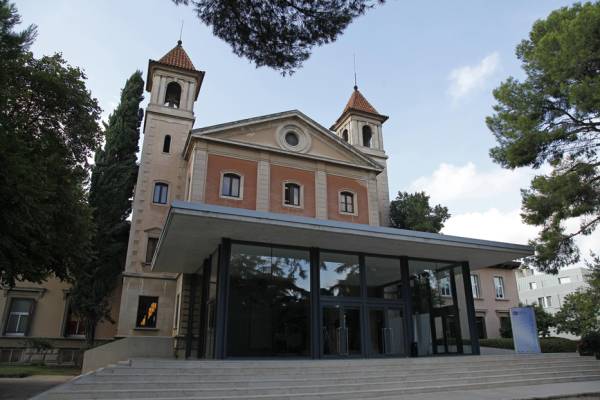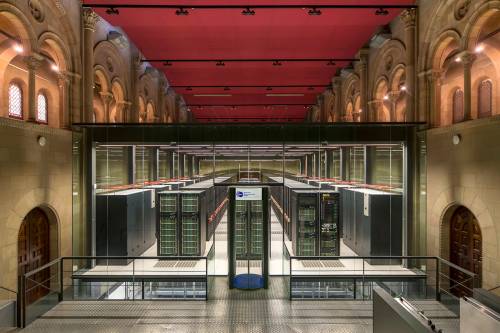Published on the 12/03/2019 | Written by Heather Wright

Where God meets science…
Think data centres and super computers, and you don’t normally think of quiet, graceful church buildings, but MareNostrum is a supercomputer in a chapel, and it’s working on some of the biggest issues facing mankind.
Housed in Barcelona’s Chapel Torre Girona, MareNostrum (Latin for Our Sea) is Spain’s most powerful supercomputer and the 22nd most powerful supercomputer in the world, with a peak power of 11.15 petaflops, and capable of performing more than 11 thousand trillion operations per second. (In 2017, when the fourth iteration of the system went live, it was listed number 13 on the Top500 list.)
Part of the Centro Nacional de Supercomputacion – or Barcelona Supercomputing Center – MareNostrum is designed to further scientific knowledge, providing European scientists across almost all scientific disciplines, from astrophysics to biomedicine, with access to high-performance computing resources.
In this non-descript chapel, servers are working on research on new radiation treatments to fight cancer, a vaccine for AIDs, climate change and the production of fusion energy, among other things.
It’s housed in a glass box within the old Catholic church at the Polytechnic University of Catalonia.
What sets the facility apart even further from similar data centres is its openness: BSC welcomes visitors to the supercomputer, running tours of the facility. The system is also freely available to ‘the most excellent and brilliant’ scientists.
“In this non-descript chapel, servers are working on research on cancer cures, a vaccine for AIDs, climate change…”
 Dubbed ‘the world’s most beautiful data centre’, MareNostrum first came online in 2004 (back then it had a peak power of 42.35 teraflops, or 42.35 trillion operations per second) and is now in its fourth iteration. When fully installed it will have a peak performance of 13.7 Petaflops.
Dubbed ‘the world’s most beautiful data centre’, MareNostrum first came online in 2004 (back then it had a peak power of 42.35 teraflops, or 42.35 trillion operations per second) and is now in its fourth iteration. When fully installed it will have a peak performance of 13.7 Petaflops.
The main supercomputer block consists of 48 server racks with a total of 3,456 nodes. Each node is comprised of two Intel Xeon Platinum chips, each with 24 processors. That equates to 165,888 processors and a main memory of 390 Terabytes.
And that’s just for the main block. A second element of MareNostrum 4 is clusters of three different technologies – IBM Power9 processors and Nvidia Volta GPUs; Intel Knights Hill processors, and a cluster formed of 64 bit ARMv8 processors – which are added and updated as they become available.
“The goal of the progressive incorporation of these emerging technologies into MareNostrum 4 is to enable BSC to operate with what are expected to be some of the most state-of-the-art developments of the coming years and to test if they are suitable for future versions of MareNostrum,” BSC says.
The housing of the supercomputer in the chapel, which was deconsecrated and not in use, was actually for purely practical reasons. In order to house the facility, a building with a large open floor plan, high ceilings and flooring capable of supporting 44.5 tons, was required.
And, if you’re wondering about the power usage for such a mammoth operation, BSC says energy consumption is 1.3Mwatt/year.
For the record, the world’s most powerful supercomputer, according to Top500, is the United States’ Department of Energy Oak Ridge National Laboratory offering, with a peak performance of 187,659.3 Teraflops, versus MareNostrum’s 10,296.1. China’s Sunway TaihuLight at the National Supercomputing Center in Wuxi took second place with a peak of 125,435.9.
Australia’s most powerful offering is the National Computational Infrastructure National Facility’s Raijin supercomputer in Canberra, which ranked 102nd in the Top 500 in July 2018, with peak power of 3,801.4 TFlops/s.
New Zealand’s National Institute of Water and Atmospheric Research’s Maui computer came in at 321 on the list, with peak power of 1,425.4 TFlops/s.



























